To the northwest and north of Beijing, a huge, serrated wall zigzags it's way to the east and west along the undulating mountains. This is the Great Wall, which is said to be visible from the moon (Webmaster note: I don't think it is visible from moon. I know it's long, but relatively much thinner than its length). Below is a satellite image of the Great Wall.
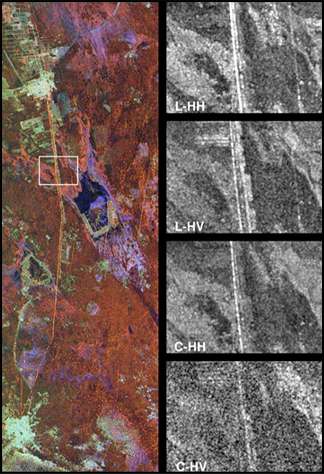
Construction of the Great Wall started in the 7th century B.C. The vassal states under the Zhou Dynasty in the northern parts of the country each built their own walls for defence purposes. After the state of Qin unified China in 221 B.C., it joined the walls to hold off the invaders from the Xiongnu tribes in the north and extended them to more than 10,000 li or 5,000 kilometers. This is the origin of the name Of the "10,000-li Great Wall".
The Great Wall was renovated from time to time after the Qin Dynasty. A major renovation started with the founding of the Ming Dynasty in 1368, and took 200 years to complete. The wall we see today is almost exactly the result of this effort. With a total length of over 6,000 kilometers, it extends to the jiayu Pass in Gansu Province in the west and to the mouth of the Yalu River in Liaoning Province in the east. What lies north of Beijing is but a small section of it.
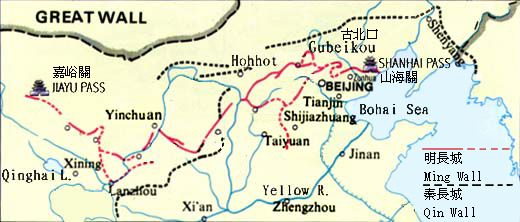
The map shows the Wall running from Jiayu Pass of Gansu Province to Shanhai Pass of Hebei Province. Representative sections of the Great Wall built in Ming times are situated near Shanhai Pass, Gubeikou and Juyong Pass.

The Badaling section of the Great Wall snaking along the mountains northwest of Beijing was built at the beginning of the Ming Dynasty in the 14th century. Being 7.8 metres high and 5.8 metres wide at the top on the average, it has battle forts at important points, including the corners.

Badaling at Night
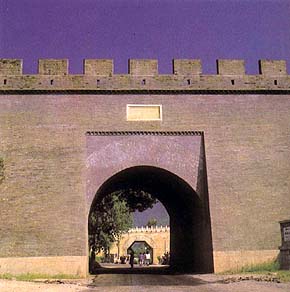
Located 10 kilometers south of the Badaling section of the Great Wall and built in an 18.5-kilometre-long valley, the pass has always been an important gateway northwest of Beijing. The name is believed to have its origin in the workers and slaves conscripted to build the Great Wall in ancient times.
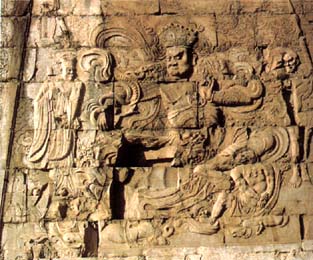
The arched gate of the terrace and the walls inside the arch are decorated with carvings. of elephants, lions, birds, flowers and heavenly kings as well as charms in six languages-Sanskrit, Tibetan, Phats pa (Mongolian), Uighur, West Xia and Han.
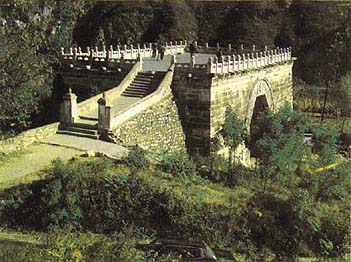
Cloud Terrace, built in 1345, was originally the base of a pagoda over looking the main road of the town of the pass.
Some interesting facts about the Great Wall
 Using satellite data scientists have rediscovered more than 600 miles of buried Wall in the past decade. Using satellite data scientists have rediscovered more than 600 miles of buried Wall in the past decade.
 Three million people--70 percent of China's population at the time--was involved in building the Qin Wall. Three million people--70 percent of China's population at the time--was involved in building the Qin Wall.
 It's estimated that the cost, in modern terms, of the Qin Great Wall would be $260 billion, which would pay for roughly half of all annual construction in U.S. It's estimated that the cost, in modern terms, of the Qin Great Wall would be $260 billion, which would pay for roughly half of all annual construction in U.S.
 The estimated cost of the Ming Great Wall is $360 billion, or roughly what's been spent on America's interstate highway system in the last 40 years. The estimated cost of the Ming Great Wall is $360 billion, or roughly what's been spent on America's interstate highway system in the last 40 years.
 The length Great Wall is equal to the distance between Atlanta and the North Pole. The length Great Wall is equal to the distance between Atlanta and the North Pole.
 It's estimated that for every person building the Qin Great Wall, another six were needed to provide building materials and supplies. It's estimated that for every person building the Qin Great Wall, another six were needed to provide building materials and supplies.
 According to historical records, the Qin Dynastry section of the Wall, covering 3,000 miles, was built in 10 years, or about 25 miles a month. According to historical records, the Qin Dynastry section of the Wall, covering 3,000 miles, was built in 10 years, or about 25 miles a month.
 One section of the Wall ascends mountain ridges that climb at an angle of 70 degrees and are 7,000 feet above sea level. One section of the Wall ascends mountain ridges that climb at an angle of 70 degrees and are 7,000 feet above sea level.
 The Great Wall's height averages from 15 to 30 feet high it's width averages from 15 to 25 feet wide with about a 13-foot wide roadway on top. The Great Wall's height averages from 15 to 30 feet high it's width averages from 15 to 25 feet wide with about a 13-foot wide roadway on top.
 It's long be rumored that dead were buried in wall. Not true. Decomposing bodies would have weakened structure. It's long be rumored that dead were buried in wall. Not true. Decomposing bodies would have weakened structure.
 If you took all the bricks from the Ming portion of the Wall alone, they could circle the Earth at the equator in a wall five feet high and three feet thick. If you took all the bricks from the Ming portion of the Wall alone, they could circle the Earth at the equator in a wall five feet high and three feet thick.
 Sentries on the wall burned wood and straw mixed with wolf dung to produce thick black columns of smoke. One column meant a force of less than 500 was attacking; four columns indicated an attack by up to 10,000 men. Sentries on the wall burned wood and straw mixed with wolf dung to produce thick black columns of smoke. One column meant a force of less than 500 was attacking; four columns indicated an attack by up to 10,000 men.
The Great Wall appears on the following banknote(s):
| |